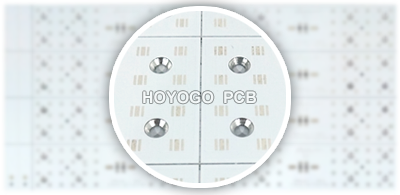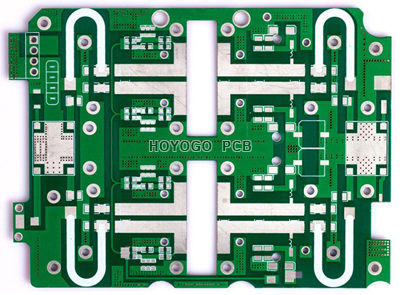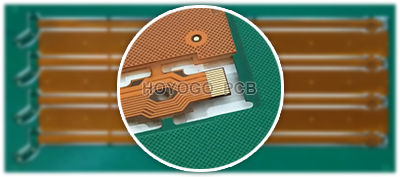This article outlines the key technologies for manufacturing high heat dissipation metal substrates, high-frequency and high-speed PCB, and rigid-flex PCB.
1. High heat dissipation metal substrates

The high heat dissipation metal substrate mainly uses the metal substrate material itself to have better thermal conductivity, and the heat source is derived from the high-power components. Its heat dissipation performance is related to the structural layout of the multi-chip (component) package and the reliability of the component package. As a high-end PCB, the high heat dissipation metal PCB is compatible with the SMT process of the metal substrate, which reduces the product volume, reduces hardware and assembly costs, replaces fragile ceramic substrates, increases rigidity, and obtains better mechanical durability force. It has shown strong competitiveness in many heat dissipation substrates, and its application prospect is very broad. The buried (embedded) metal-based PCB is a partially implanted metal block PCB, which is a new type of thermal PCB technology that has appeared in recent years. Its heat dissipation design concept is relatively advanced, and no public report on related technologies has been found in industry journals at home and abroad. As a heat dissipation substrate for high-power components, it has the following advantages due to the special design:
(1) Excellent heat dissipation, the components are in direct contact with the heat sink, no heat dissipation bottleneck;
(2) Flexible design method can fully meet the heat dissipation requirements of individual high-power components;
(3) Embedded design, coplanar with PCB without affecting surface mount (SMD);
(4) Light weight and small size, in line with the mainstream development trend of light, thin, short and small electronic assembly;
(5) Compatible with PCB production technology.
2.High-frequency and high-speed PCB

High-frequency and high-speed PCB were used in the military field as early as the end of the 20th century. In the past 10 years, because some frequency bands of high-frequency communications originally used for military purposes were given to civilians, civilian high-frequency and high-speed information transmission technology has made rapid progess, which has promoted the improvemnet of electronic informaiton technology in varioud industries. It has the characteristics of long-distance communication, telemedicine surgery, and automatic control and management of large logistics warehouses. It should be noted that the electronic components and PCB industry that work in high-frequency signal transmission have strict technical requirements, such as the range of working impedance, the smoothness of metal wiring, the requirements of high-frequency and high-speed signals on the line width, as well as relative distance between signal lines and strata, etc. Excellent process technology has driven the development of the industrialization of electronic components and electronic products. It is expected that the demand will reach more than 10 times in the next 5 years.
3.Rigid-flex PCB technology

In recent years, the high-performance, multifunctional, and small-sized and lightweight electronic devices have shown an accelerated developjiment trend. Therefore, the requirements for miniaturization and high density of electronic parts and PCBs used in electronic devices are increasing. In order to meet these requirements, the innovation of the manufacturing technology of build-up multilayer boards for rigid PCBs has promoted the application of various build-up multilayer boards to electronic equipment. However, mobile devices such as portable devices and digital video cameras have not only accelerated the cycle of adding new functions or improved performance, but also there is a strong trend of miniaturization and weight reduction and prioritized design. Therefore, the space given to the functional components inside the case is only a limited and narrow space, which must be used to the maximum extent. In this case, a system structure often composed of several small build-up multilayer boards and a flexible PCB or cable connecting them is often referred to as an analog rigid-flex PCB. Rigid-flex PCBs also take advantage of this combination, saving space in particular. This is a functional composite multilayer board with several rigid PCBs and flexible PCBs integrated. Rigid-flex PCBs are being widely used in mobile devices because they do not require connectors or space for connection, and they have almost the same mountability as rigid PCBs.
The above several key technologies are currently widely used in PCB manufacturing. With the development of electronic technology, there will be more innovative and improved PCB manufacturing technologies available in the future.